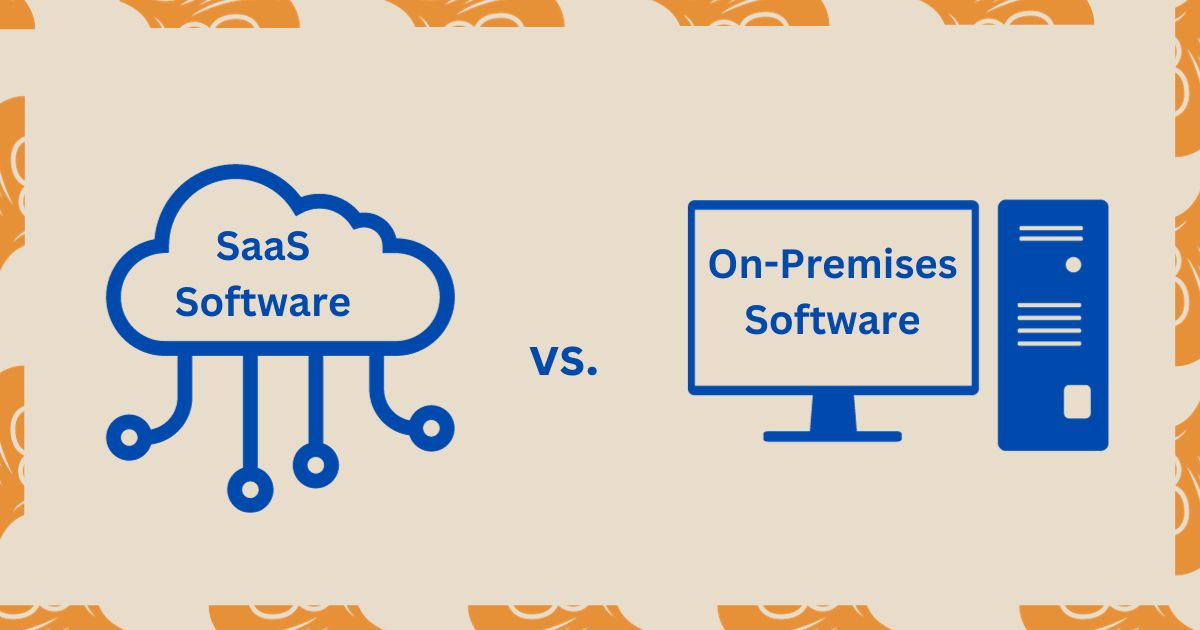SaaS vs On Premises Software:
To understand the differences between the SaaS software and the traditional software, lets first check out what they mean, and then we will check out all the differences between the two.
SaaS, or Software as a Service, refers to a cloud computing model where software applications are provided by the cloud service provider over the internet on a pay-as-you-go or subscription basis. It eliminates the need for the user to install and maintain the software on their local devices or servers. The user can access the SaaS software through a web browser over the internet.
Traditional software, also known as on premises software or enterprise software, refers to software that is directly installed and run on the user’s computer or a local server on the premises and cannot be accessed over the internet. It is not hosted in the cloud, and it needs to be manually installed on the local device and periodically updated. It is not used on a pay-as-you-go or subscription basis, but the user purchases it by paying one-time license fees.
Differences between the SaaS vs On Premises with Pros and Cons:
- Installation: For SaaS software, you don’t need to install it on your PC, devices, or local server. But for on-premises software, you need to install it on your local PC or server to use it.
- Payment Model: For SaaS software, you pay on a pay-as-you-go or subscription model, while in the case of on-premises software, you need to pay for the software or for the license acquisition.
- Ease of Use: SaaS software is based on a web browser, and you can directly use it over the internet without any installation. On-premises software needs to be installed on your local PC first to be used.
- Software Ownership: SaaS software means you don’t own it but rent it, while on-premises software means you own it after paying the license fees.
- Hardware Requirements: For the installation of the on-premises software, you need to fulfill the hardware requirements of the software, like hard disk space, RAM, etc. But in the case of SaaS software, no such requirements need to be fulfilled.
- Maintenance: With SaaS software, users don’t need any maintenance because the cloud service provider will manage and maintain it. In the case of traditional or on-premises software, the user will have to manage and maintain the software, keep it up-to-date, and resolve any present bugs from time to time.
Examples of SaaS vs On Premises:
- Photoshop is on-premises software, so we need to download it on our PC to use it, while Canva is SaaS software, which you don’t need to install, but you can sign up, login, and use it right away without any installation.
- Excel Sheets is on-premises software, while Google Sheets is a SaaS solution.
- Google’s Gmail is a SaaS solution, while Microsoft Outlook is an on-premises solution.
- Onshape is a SaaS-based CAD software, while AutoCAD by Autodesk is an on-premises CAD software.
With all the above the explanation you must have clearly understood the saas vs on premises software difference. If you want to learn more in depth about cloud computing and its different models Iaas, Paas, and SaaS you can check out our these below posts-
Discover more from FundingBlogger
Subscribe to get the latest posts sent to your email.

